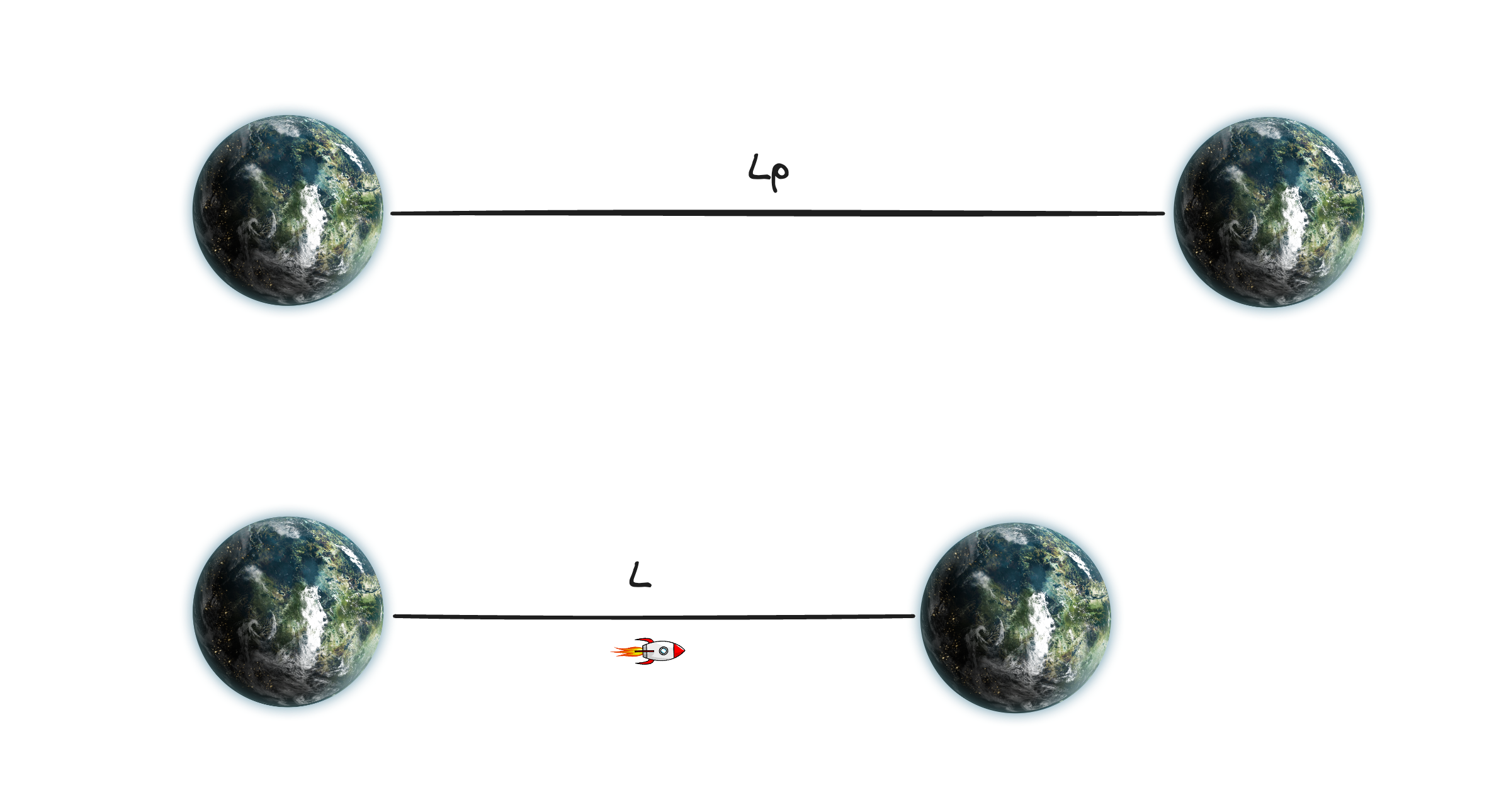Length Contraction
A follow up from my previous post on time dilation to explain length contraction. Consider a rocket ship traveling between two planets, $A$ and $B$. There is an observer on planet $A$ that observes the rocket ship moving with speed $v$ towards $B$ across a distance $L_p$. In the reference frame of planet $A$, the time duration of the rocket ship flight will be:
\[v = \frac{L_p}{\Delta t} \implies \Delta t = \frac{L_p}{v}\]Using our time dilation result, we also know that $\Delta t = \gamma \Delta t’$ where $\Delta t’$ is the time duration from the reference frame of the traveling rocket. Then, the total length from the rocket ship would be:
\[L = v \Delta t' = v \frac{\Delta t}{\gamma} = \frac{L_p}{\gamma}\]Interpretation
From the post on time dilation, we know that the moving object will experience less time than the stationary object (i.e. the stationary object’s time is dilated). As a consequence, traveling at less time but with the same velocity will result in a shorter distance traveled, or that the length will be contracted.
